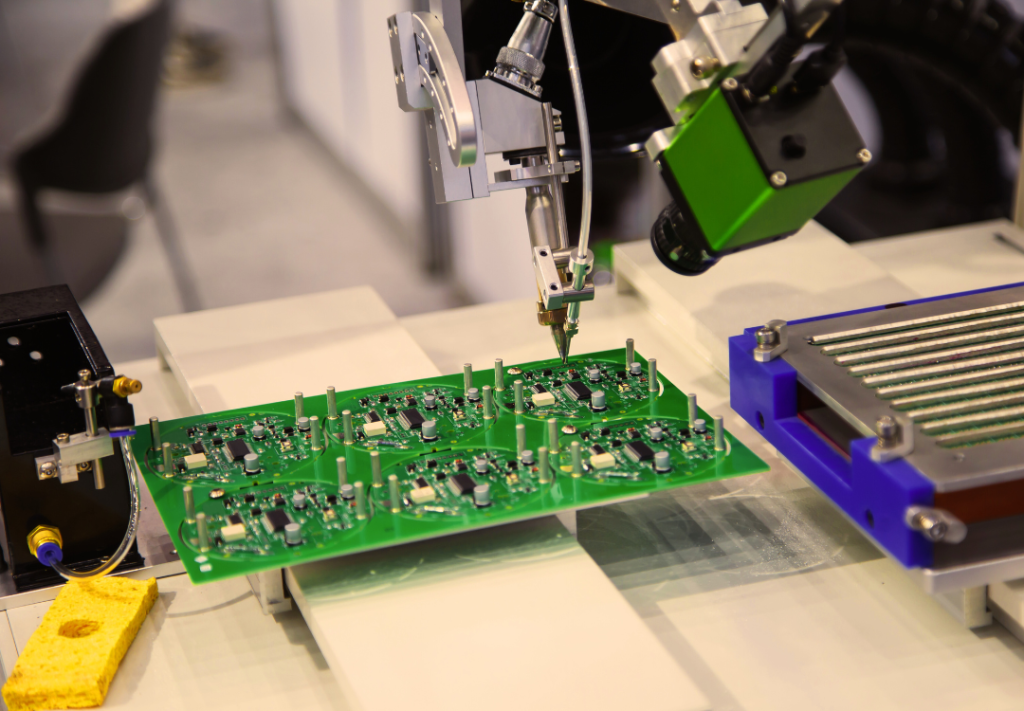Printed Circuit Boards (PCBs) are the heart of modern electronics, powering everything from smartphones to industrial equipment. Over the decades, the methods of manufacturing PCBs have transformed dramatically. What started as a labor-intensive manual process has evolved into a high-speed, fully automated production line. This article explores the fascinating evolution of PCB factories and how automation is reshaping the industry.
The Early Days: Manual PCB Manufacturing
In the early stages of PCB manufacturing in the PCBA Factory, production was largely manual. Technicians would painstakingly design circuits using physical tapes and photolithographic processes. Key steps like drilling, plating, soldering, and inspection required skilled labor and significant time investment.
Challenges of Manual Lines:
- Low production volume
- Inconsistent quality
- High labor costs
- Slow turnaround times
Despite these limitations, early PCB factories laid the foundation for mass electronics production and spurred innovation in consumer electronics.
The Shift to Semi-Automation
As demand for electronic devices surged in the 1980s and 1990s, PCB manufacturers began adopting semi-automated systems. Equipment like CNC drilling machines, automatic exposure units, and screen printers improved consistency and productivity. Surface Mount Technology (SMT) also emerged as a game-changer, allowing components to be mounted directly onto the PCB surface.
Key Advancements:
- Introduction of SMT lines
- Pick-and-place machines
- AOI (Automated Optical Inspection) systems
- Partial computer integration for process control
While still dependent on human oversight, these upgrades drastically reduced errors and increased throughput.
The Era of Full Automation
Today, modern PCB factories are increasingly fully automated, leveraging Industry 4.0 technologies to optimize production. From data-driven design and Gerber file processing to robotic assembly and AI-based quality control, the entire PCB manufacturing workflow can now be executed with minimal human intervention.
Features of Fully Automated PCB Lines:
- Robotic pick-and-place systems capable of handling thousands of components per hour
- Automated Solder Paste Inspection (SPI) and X-ray inspection (AXI) for precise defect detection
- Smart conveyor systems integrated with MES (Manufacturing Execution Systems)
- Real-time analytics and predictive maintenance powered by IoT
- Zero-touch order-to-ship process for fast, scalable production
Benefits of PCB Factory Automation
Automation isn’t just about speed—it enhances every aspect of PCB production:
- ✅ Consistency & Precision – Robots follow exact specifications, minimizing human error
- ✅ Scalability – Easily scale from prototype to mass production
- ✅ Cost-Effectiveness – Lower operational costs over time
- ✅ Faster Turnaround – Reduced lead times help meet tight deadlines
- ✅ Higher Yields – Less waste and rework due to superior quality control
Looking Ahead: Smart Factories and AI in PCB Manufacturing
As we move into the future, smart PCB factories are leading the charge. AI and machine learning are being used to optimize layouts, predict failure points, and fine-tune manufacturing parameters in real time. Cloud-based systems enable remote monitoring and digital twin simulations, driving further efficiencies.
Future Trends:
- Integration of 5G and edge computing for real-time factory control
- Use of machine learning for defect prediction and design optimization
- Sustainable manufacturing practices using eco-friendly materials and energy-efficient systems
Final Thoughts
The evolution of PCB factories from manual production lines to fully automated smart systems is a testament to the industry’s relentless drive for innovation. For OEMs and electronics manufacturers, partnering with modern PCB assembly services that embrace automation is key to staying competitive in a rapidly evolving market.
As automation continues to advance, the future of PCB manufacturing looks faster, smarter, and more efficient than ever before.








